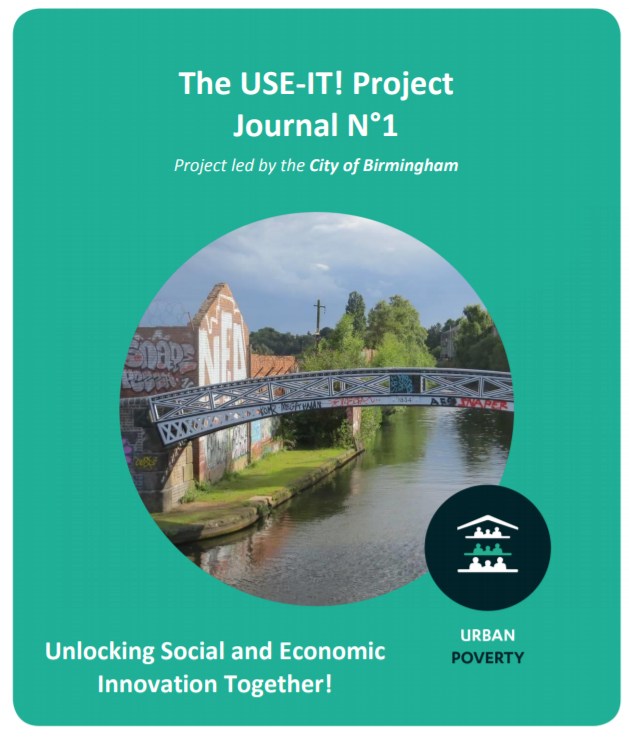Since the announcement of our successful bid for EU Innovative Actions Funding in collaboration with CURS and led by Birmingham City Council, the USE-IT! project (Unlocking Social and Economic Innovation Together) has published its first Expert Journal.
The aim of USE-IT! is to develop a systematic approach to engaging poor and migrant communities in urban development. The Executive Summary of the report is presented below. To read the full report, please see here.
“Birmingham is a key economic hub and a popular destination for migration in the UK. Nevertheless, it is still the 6th most deprived city in England when measured by the extent of deprivation. Birmingham City Council fully understands the scale of the problem and has set up the £3.13m project USE-IT! that has been selected as one of 17 “Innovative Urban Actions” by the European Commission initiative. It runs between 2017-2019 testing a new solution to combat urban poverty by linking larger capital investment projects (macro-assets) in deprived neighbourhoods with local community skills, talents and ideas (micro-assets) to unlock social and economic innovation.
As its ‘test field’ serves Greater Icknield, a highly-populated inner transect with high poverty and migrant populations. The USE-IT project will make use of the major developments projects in Greater Icknield (housing and hospital construction) to improve the socioeconomic situation of the deprived residents, striving to increase the employment prospects of the residents and migrants, to generate jobs and stimulate the local economy.
The mechanism to unlock the potential of the poor communities (cf. chapter 1), the local skills of residents and incoming migrants consists in the identification of local skills through community researchers, the matching of job skills in the community with the job demand through the larger investment projects and the creation of a community of social enterprises and social production connected to the larger investment projects. The partnership to test and implement that mechanism is wide and diverse, consisting of private, public, civic and third sector entities.
So far (cf. chapter 2) the partnership and cooperation structure has been established, the training of community researchers has started as well as the identification of local people with relevant qualifications to be hired by the hospital (already within nine months more than 70 individuals could be identified). Also, the Soho Social Enterprise Network has been set up; as a result, three new social enterprise start-ups have already been founded within 9 months.
Key challenges (cf. chapter 3), implementing the complex USE-IT! approach, have been getting the complex partnership with the different working culture running; to reach the local communities and involve them in the project; to recruit the community researchers and coordinate the large partnership within the social enterprise network as well as engaging property developer for the USE-IT approach.”
This blog was written by Charlotte Hoole, City REDI.
Disclaimer:
The views expressed in this analysis post are those of the authors and not necessarily those of City-REDI or the University of Birmingham.
To sign up to our blog mailing list, please click here.

